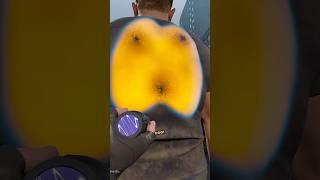
Naming Ethers - IUPAC Nomenclature With Branching, Organic Chemistry Practice Problems
Комментарии:

You are my god in chemistry❤❤❤
Ответить
this guy is a godsend
Ответить
my teacher always rushes thru these things. thanks!
Ответить
thankss
Ответить
Anyone from India 🇮🇳🇮🇳
Ответить
For isopropylethylether .... Can we name it also : ethoxypropane ?
Ответить
brudda, i think you got it wrong with the 3-ethoxyl-2-methyl pentane
Ответить
Anyone know how to do the common names for the two or three examples where he only did IUPAC names? 😊
Ответить
I am still confused about naming the ethers, especially the IUPAC system, maybe a better way to break it down?
Ответить
Loved your videos homie
Ответить
Bhai jan good km h
Ответить
Please why did you not indicate the position of the ethers on the cycloalkanes as they where on the second carbon (ortho) ?
Ответить
For the iupac name don't we have to number the cyclo's am a little bit confused and why
Ответить
Why is it called isopropyl
Ответить
The king has saved me once again
Ответить
well done
Ответить
Are u aware that an Indian publication named oswal has given a link to this video in its book in the form of QR code
Ответить
Bless u🫶🏾🫶🏾😭
Ответить
MUCH LOVE
Ответить
Thanks this is a life saver❤
Ответить
I don’t understand… how do you know if something is methoxy ethane or if it’s ethoxy methane? Because isn’t it the same thing?
Ответить
Am so proud of you. Thank you so much for giving me more knowledge. . I thought I would never learn it, but thank God you gave me hope ❤❤❤
Ответить
Please also make video on cyclic ether
Ответить
This is my first time ever watchin an actual Organic Chemistry video from you, which means you've made me pass general chemistry 1st semester. Thank you @TheOrganicChemistryTutor
Ответить
Excellent! Clear and concise!! 😊
Ответить
Marry me
Ответить
I thought we are to ignore the prefix, is cyclo not a prefix in this case?
Ответить
Thank you for making such a good video. I have a better understanding now!!!
Ответить
I have a test today in organic chemistry
This helped to cleaar a lot of stuff. Up
Thanks

Here's my little explanation into how both naming systems function :)
Common: Perceives the oxygen atom as isolated and any other parts of the molecule are substituents that are named before it (alphabetical order if alkyls or aryls). Uses the word 'ether', but not '-oxy' root.
IUPAC: Perceives the oxygen atom to be a part of the shorter aryl group as a substituent, and the other aryl/alkyl group is the parent chain that is the basis of its name. Uses the root '-oxy', but not the word 'ether.'

I have a test tomorrow on organic chemistry. This really helped clear some things up, thank you!!
Ответить
استمر
Ответить
Very helpful, easy to understand because of good explanation.
Ответить
I love you man you're saving lives out here
Ответить
Thanks for such a organized video♥️
Ответить
Love ur efforts
Ответить
love from india buddy 😃
Ответить
New sub.. Thank you so much teacher it helps me better to understand our chemistry class
Ответить
Bro what do you mean by priority of functional groups
Ответить
You're doing a really great job..
Ответить
🤍
Ответить
Thank you
Ответить
Thank you
Ответить
What a god.
Ответить


























